MT EVEREST CAMP 3 EXPEDITION
EXPEDITION OVERVIEW
The Mt Everest Camp 3 Expedition also offers climbers a challenging and rewarding experience on the world’s highest mountain without the commitment of a full summit attempt. The goal of this expedition is to reach Camp 3, situated at approximately 7,200 meters (23,600 feet) on the Lhotse Face, providing a taste of high-altitude climbing on Everest.
Mount Everest, the towering giant of the Himalayas, also stands tall as the highest peak on Earth at an awe-inspiring 8848.48 meters (29,030 feet). Nestled on the border between Nepal and Tibet, this behemoth of a mountain is also revered as the Mother Goddess by the Nepalese and Sherpas, who call her Sagarmatha, and the Tibetans, who refer to her as Chomolungma. For many mountaineers, the quest to reach the top of Mount Everest is also the ultimate adventure. The mountain’s reputation as a formidable challenge only adds to its allure, drawing in thrill-seekers from around the world to test their mettle against its icy slopes. And for those who are able to reach the summit, the feeling of accomplishment is second to none.
Pre-requisite requirements several 4000M-6000M expeditions: Lobuche East & Island Peak, Chulu West, Khumbu 3 Peak expeditions, Mt, Blanc etc
At 7 Summits Expedition, our team of skilled strategists also understands the importance of taking a holistic view of the climbing process. We will work with you to develop a personalized plan that takes into account your individual needs and goals. If you are also committed to realizing your dream of climbing Mount Everest and believe you have the necessary experience, determination, and dedication to prepare, we welcome you to apply to join our team.
The Mt Everest Camp 3 Expedition is also ideal for climbers seeking high-altitude experience on Everest, offering a significant achievement and preparation for future summit attempts.
EXPEDITION HIGHLIGHTS
- Everest 8848.86M, Lobuche East (Acclimatisation training peak)
- Camp 1 – 3
- 7 Summits Expedition Exclusive Mountain Expedition Doctor (2024 Spring Expedition)
- Khumbu ice fall, glacier ice climbing training, ladder climbing + other technical climbing training
- 2 Supplemental Oxygen Cylinders for client use (Cylinders number also depend on manufacturer)
- Helicopter 🚁 Ktm – Lukla
- 1:1 throughout the expedition.
- High altitude porter/s to help clear up our expedition waste
Itinerary
-
Day 1: Arrival in KTM
Day 1: Arrival in KTM
-
Day 2: City tour in KTM
-
Day 3: Fly to Lukla and begin the trek to base camp (stay in Monjo)
-
Day 4: Trek to Namche
-
Day 5: Rest/Acclimatisation day in Namche, Everest View Point, etc.
-
Day 6: Trek to Tengboche
-
Day 7: Trek to Dingboche
-
Day 8: Acclimatisation day in Dingboche
-
Day 9: Trek to Lobuche base camp
-
Day 10 - 12: Lobuche high camp - Acclimatise - Summit
-
Day 13: Trek to base camp
-
Day 14 - 17: Acclimatize and review mountaineering technique (ladder practice, fixed lines, etc) in base camp, Puja ceremony.
-
Day 18 - 25 Khumbu Ice Fall, Camp 1, 2, 3 and return to BC
-
Day 26 EBC to Pangboche
-
Day 27 Namche Bazaar
-
Day 28 Lukla
-
Day 29 Kathmandu
-
Day 30 Departure
Include / Exclude
Cost Includes:
-
- IFMGA/NNMGA certified Guide leader
- $500 Individual tip pool. (This is not a summit bonus tip) *Tip pool will be fairly distributed among all 7 Summits Expedition staff members. (Guides, porters, drivers, hotel security, and staff).Guest may personally hand in extra tips to our guides and porters)*
- Helicopter Charter From Kathmandu – Lukla.0
- 7 Summits Expedition Branded merchandise (Down Jacket, Cap, Buff)
- Guided support from BC to Camp 3
- Head chef and kitchen helpers (Helpers increase with the number of climbing team members)
- 2 nights before the expedition and 1 day after the expedition. Hotel in Kathmandu. Single room. (Should clients return early from their expedition, clients will be responsible for their extra Kathmandu hotel bookings)
- All trekking and climbing permits (Khumbu Region Permit and TIMS)
- All internal-local transportation to and from the trekking trailhead
- Expedition tents, a single tent in Base Camps and shared in higher camps Brands Salewa, Mountain Hardwear, Samaya equipment, Kailas
- 2 Supplemental Oxygen Cylinders for client use
- 30 kgs personal weight
- Burners and expedition equipment
- Walkie-talkie/ Satellite phone
- Breakfast, Lunch, and Dinner on trek and expedition days.
- Lodge accommodation during the trek
- Porters per guest
- The arrival pick up and departure
- Basic First aid kit
- Welcome/Farewell leave Dinner
Cost Excludes:
- Visas and travel insurance
- Summit Bonus tip ($800 P/P)
- Entertainment and food ( Kathmandu )
- Bottled drinks and beverages
- Evacuation (will be done in your account)
- Tips (Service Charge in Hotel and Restaurants are included)
- Laundry, Phone services, Personal expenditure transactions
- Optional trips
- Tea breaks, chocolates or other snacks, and any meals besides breakfast, lunch, and dinner.
- Delay and cancellation because of natural phenomenon
- International flights to Kathmandu
Price per person
PREPARE FOR EVEREST CLIMB WITH A PARTIAL CLIMB TO CAMP 2 6400M OR CAMP 7200M
2024/25 MT. EVEREST CAMP 3
30 DAYS EXPEDITION
EQUIPMENT RENTALS AVAILABLE (LINK)
Grading (Alpine/Fitness): AD/4 (click for more grading info)
COST. . .
Camp 3, 7200M: $16950 P/P
- Preprations for Everest climb and Khumbu Ice fall experience
- Client support for the entire climb
- Provides flexibility and independence
Please inquire about prices in your local currency. We accept payment in£GBP/ €EUROS/ $AUD
Deposit: $4,000 (USD) P/P
DEPARTURES. . .
Spring 2024
1st – 30th April (4 spaces remaining)
Spring 2025
1st – 30th April (4 spaces remaining)
7 Summits Expedition founder Bisesh will be co-ordinating the team
Usefull Information
RESPONSIBLE AND SUSTAINABLE EXPEDITION (HOW WE ARE OPERATING DIFFERENTLY)
The problem of waste accumulation in the mountains is a pressing concern that has been largely overlooked for too long. At 7 Summits Expedition Adventure, we are committed to taking action to address this issue head-on. In an effort to reduce the amount of waste left behind by expeditions at high camps, we will have dedicated high-altitude porters who will bring down waste from Camps 1 and 2 to Base Camp. Our client-leading Sherpa team will also assist in bringing down waste from Camps 3 and 4 to Camp 2 during rotation and while the summit team descends.
Once the waste has been brought down to Base Camp, it will be properly sealed and transported via yak to a designated dump site in the valley. We believe that it is our moral duty, as operators of expeditions in the mountains, to protect and preserve these environments for future generations. That is why we are implementing these tactics and are committed to building on our sustainable practices. The pollution of our mountains and the disregard for the waste left behind is a concern that should be shared by all. Together, we can work towards a cleaner and more sustainable future for the mountains we love
ACCOMMODATIONS
Day 1 – 2 & 29 (Kathmandu – Hotel Dusit Princess)
Tea houses on Everest trek.
Alpine Camping during Lobuche East camps and Everest Camp 2 or 3
EVEREST EXPEDITION STRATEGY
EXPEDITION GOALS
At 7 Summits Expedition we are not focused on being the biggest or most glamorous expedition team. Our focus and priorities are simple.
- Everest Camp 1,2 and 3 success with high safety standards and creating a fun and memorable climbing experience.
- Being a beacon for Responsible, Ethical, and Sustainable expedition operator
- Assembling and recruiting the best climbing guide leaders
OUR EVEREST EXPEDITION ROUTE
- The South col route, Nepal. Better infrastructure and rescue availability up to camp 2.
- The HRA (Himalayan Rescue Association) at base camp is a medical clinic manned with specialty-trained doctors 24/7
- The South Side is a milder climbing environment vs the drier, dustier, windier North Side
For the past seven years, we at 7 Summits Expedition Adventure have been at the forefront of providing state-of-the-art communication systems for our expeditions. These systems offer comprehensive weather forecasting, which allows us to plan our ascents around favorable conditions. In addition, our team of meteorologists, based in London, Kathmandu, and the base camps, provides an expert interpretation of weather data, including wind speed, precipitation, and temperature, to help inform decision-making.
Unlike larger operation teams, we take a more nimble approach, with small, flexible teams. This allows our climbers greater flexibility in terms of rotation dates and the ability to make swift decisions about summit attempts, minimizing the potential for queues on the mountain. We also have a dedicated base camp and support crew to ensure that our clients receive the highest level of care, including a dedicated base camp doctor who is solely focused on the well-being of the team. Our expedition leader climbs with the team to the summit and back, enabling us to make critical decisions quickly and effectively.
By keeping our team small but highly supported, we are able to provide the best possible strategy, flexibility, and resources to succeed in the dynamic environment of Mount Everest, while never compromising on safety or standards. Please see below for further details on our expedition strategy.
EVEREST BASE CAMP 5346M
To begin our expedition, we will embark on a leisurely trek through the iconic Everest base camp, taking time to acclimatize and immerse ourselves in the local culture and the stunning views of the Himalayan range. Our first camp will be the Lobuche East base camp, where we will also climb Lobuche East as an acclimatization peak before settling in at the Everest base camp.
If you wish to invite family or friends to join you on this journey until either Everest base camp or the Lobuche East Peak climb (suitable for beginners to intermediate climbers), please visit the link provided or contact us to make arrangements. We look forward to sharing this incredible
LOBUCHE EAST 6119M CLIMB FOR TRAINING AND ACCLIMATISATION
As part of our expedition, we will use Mount Lobuche East (elevation 6119 meters) as an acclimatization and training peak. This popular 6,000-meter peak in Nepal offers an ideal opportunity for our team to refresh our skills, acclimatize to high altitude, and bond with our fellow members. The climb will also provide our guides with a better understanding of each climber’s confidence, fitness, and skills.
We will establish base and high camps before attempting to summit Lobuche East and returning to base camp for a rest before moving on to Everest base camp. Using this approach, we hope to maximize the safety and success of our expedition.
PUJA CEREMONY AT EVEREST BASE CAMP
Before the arrival of our climbers at base camp, our base camp manager and team will have already set up the necessary infrastructure, including individual camps, storage areas, communication and media stations, toilet and shower facilities, a kitchen and dining tent, and a headquarters for briefing purposes.
It is a tradition on all of our expeditions to begin with a Puja ceremony, led by a dedicated Lama Guru (head monk). During the ceremony, prayers will be recited to the mountain gods, asking for well-being, safety, and a successful expedition. All climbers are expected to participate in the ceremony, and their climbing gear will be blessed as well. This tradition is an important aspect of the expedition for our guides and we encourage all climbers to take part.
TRAINING AT BASE CAMP AND KHUMBU ICEFALL. (LADDERS, FIXED LINES TRAINING) 5486M / 17998FT
Upon arriving at base camp, the climbing team will remain there for a period of 30+ days. One of the first technical challenges of climbing Mount Everest is crossing the ladders over the Khumbu icefall. Therefore, a significant portion of our training will be dedicated to becoming proficient in this task. We will also spend time practicing on nearby glaciers, refining our skills in climbing vertical ice walls using fixed ropes and ice axes. Our goal is to replicate the conditions of the icefall as closely as possible, so that when we begin our ascent, all climbers will be comfortable and confident in crossing the ladders. During this time, our guides will provide personal guidance in real-time to ensure the safety and success of the team.
How many rotations: Each time we go from base camp to Camp 1 we will have to cross Khumbu ice fall.
When will climbers sleep here: No, we do not sleep here.
CAMP 1 (6,065M/19,900FT)
Once the team has successfully navigated the challenges of the Khumbu Icefall, Camp 1 will be established on a snowy and icy surface below the Nuptse. From this point on, the route to Camp 2 becomes more even and manageable. Camp 1 will be the first location where climbers will need to share tents and adapt to an alpine environment. It is important to be prepared for these challenges and to work together as a team to overcome them.
How many rotations: 2 rotations
When will climbers sleep here?: Climbers will sleep here during acclimatization rotation mostly.
CAMP 2 (6400M/20997FT)
The hike from Camp 1 to Camp 2 is relatively even, compared to other sections of the climb. The route passes between Nuptse, Everest, and Lhotse, offering stunning views of these iconic peaks. It is an exciting part of the expedition where you will have to climb and navigate the zig-zag crevasses, one that requires focus and determination.
How many rotations: 2 rotation
When will climbers sleep here?: Climbers will sleep here during acclimatization rotation mostly and when descending back from the summit.
CAMP 3 (7200M – 7500M / 23622FT+)
Camp 3 is located on a steep section of Lhotse’s face and requires a strenuous climb up fixed-line ropes from Camp 2. The camps at this elevation are particularly dangerous, as they are situated on small ledges or pockets that can be precarious. It is crucial that all climbers ensure their safety ropes are securely attached to the main safety ropes, as there have been numerous falls and incidents, particularly during nighttime. Our guides will be available to provide assistance and guidance to ensure the safety of the team.
When will climbers sleep here?: Climbers will not sleep here, this will be the final point for Everest partial climbing team.
OUR EXPEDITION LEADERS AND GUIDING TEAM:
Our team, led by founder Bisesh and composed of selected climbing team members who have been climbing together for the past 7 years, will be responsible for strategizing, planning, organizing, and climbing Mount Everest. Our team is well-known for prioritizing the well-being of our clients above all else. Our guides are certified professionals who are trained and assessed by the International Federation of Mountain Guides Associations (IFMGA) and the Nepal Mountaineering Association (NMA). They are highly skilled and competent, and their role is to provide a dedicated level of security to you during the expedition. Their experience is based on years of firsthand experience on the mountain and leading numerous expeditions with 7 Summits Expedition teams. Our team consists of both international and local members, and we believe that the knowledge and understanding of both worlds brings valuable insights when working together to develop effective strategies and backup contingency plans in case of setbacks during our expedition. These are world-class climbers and guides who are knowledgeable, kind, strong, experienced, respectful, and highly proficient. We provide a 1:1 Sherpa/Guide ratio, which results in more support and backup for your summit attempt and, therefore, a greater safety margin and increased chance of success.
This extensive organizational and logistical expertise, combined with a commitment to providing the best possible services to ensure safety and success, makes 7 Summits Expedition the premier guiding company on Mount Everest. All members of the team will have an equal opportunity and dedicated support for safely climbing to the summit and returning to base camp, as well as the option to climb Lhotse if desired. Ensuring that our clients have a positive experience is a top priority, and our climbers can be assured of a great time throughout the expedition. You may even want to join our Sherpa dance group – not only are they skilled at guiding and taking care of you, but they are also known for their impressive dance moves. We may even have a competition
7 Summits Expedition is a premier guiding company on Mount Everest, known for its commitment to safety and success. Our team of experienced guides and climbers is dedicated to providing the best possible services and support to ensure the success of our clients on the mountain. With a focus on teamwork and a relaxed atmosphere, we strive to create an environment that gives our clients the best chance of reaching the summit. To qualify for our program, climbers must have a strong base of experience and proven climbing skills. If you have any questions about your eligibility, we encourage you to reach out to us for a discussion.
Equipment List
Clothing
Base Layers:
– Moisture-wicking thermal tops and bottoms
Insulation Layers:
– Fleece or down jackets and pants
Outer Layers:
– Waterproof and windproof shell jacket and pants (Gore-Tex or similar)
Down Suit:
– Full-body high-altitude down suit
Headgear:
– Warm hat or beanie
– Balaclava or buff
– Sun hat or cap
Handwear:
– Lightweight gloves for lower altitudes
– Insulated gloves or mittens for higher altitudes
– Over mitts
Footwear
Mountaineering Boots:
– High-altitude double or triple boots (e.g., La Sportiva Olympus Mons, Scarpa Phantom 8000)
Trekking Shoes:
– Lightweight trekking boots or shoes for lower altitudes
Gaiters:
– High-altitude gaiters to keep snow out
Socks:
– Moisture-wicking liner socks
– Heavyweight insulated socks
– Spare socks
Climbing Gear
Ice Axe:
– Lightweight ice axe for climbing
Crampons:
– High-quality crampons compatible with your boots
Climbing Harness:
– Lightweight mountaineering harness
Carabiners:
– Locking and non-locking carabiners
Ascenders:
– Mechanical ascender for fixed ropes
Belay/Rappel Device:
– ATC or similar belay device
Ropes:
– Personal prusik loops or short lengths of cord
Helmet:
– Climbing helmet
Camping Equipment
Tent:
– High-altitude expedition tent
Sleeping Bag:
– Down sleeping bag rated to at least -40°C (-40°F)
Sleeping Pad:
– Insulated inflatable or foam sleeping pad
Cooking Equipment:
– Stove and fuel (provided by the expedition team)
– Lightweight pot and utensils
Personal Gear
Backpack:
– Large backpack (60-80 liters) for carrying gear
– Small daypack (20-30 liters) for acclimatization hikes
Hydration:
– Water bottles (insulated for higher altitudes)
– Hydration system (optional)
Navigation:
– Map, compass, or GPS device
Headlamp:
– Headlamp with extra batteries
Sunglasses:
– High UV protection glacier glasses
Goggles:
– Ski goggles for protection in high winds
Sunscreen:
– High SPF sunscreen and lip balm
Miscellaneous
First Aid Kit:
– Personal first aid kit with altitude medications
Personal Hygiene:
– Toiletries (toothbrush, toothpaste, wet wipes)
– Hand sanitizer
Communication:
– Satellite phone or radio (often provided by the expedition)
Camera:
– Lightweight camera or smartphone for photos
Optional Items
Supplemental Oxygen:
– Oxygen bottles and mask/regulator set (typically provided by the expedition)
Books/Journal:
– Reading material or a journal for downtime
Snacks:
– Personal energy bars or snacks
This list covers the essential gear needed for the Mount Everest Express Expedition, ensuring climbers are well-prepared for the challenges of high-altitude climbing. Always consult with your expedition operator for any specific gear recommendations or requirements.
-
 Best Seasons March to May, September to November
Best Seasons March to May, September to November -
 Group Size 2 to 10
Group Size 2 to 10 -
 Duration 30 DAYS BOOKING OPEN
Duration 30 DAYS BOOKING OPEN -
 Maximum Altitude 8848.86M
Maximum Altitude 8848.86M -
 Trek Difficulty Technical and Challenging
Trek Difficulty Technical and Challenging

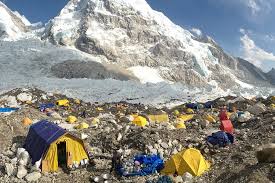


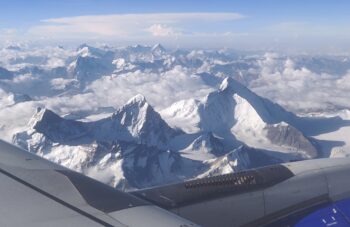
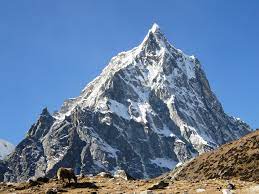
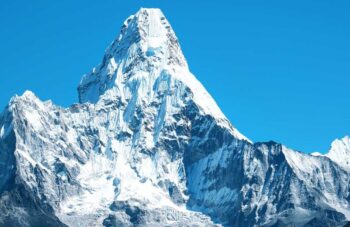
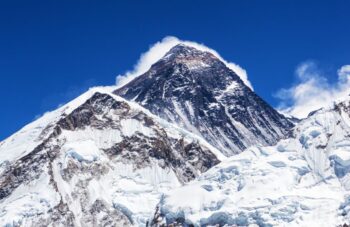
Leave a Reply